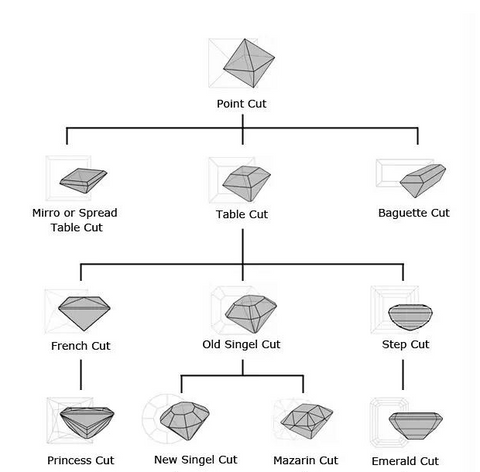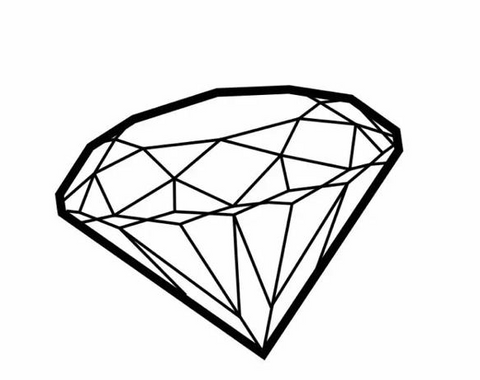Your Cart is Empty
All OUR RING CAN PASS THE DIAMOND TESTER

The cut of a diamond is a very important factor for its quality evaluation. A good cut can show the diamond's good fire, brightness and sparkle, making the diamond more dazzling.

The common crystal forms of diamond are octahedron, rhombohedral dodecahedron and the combination of the two. As the hardest gemstone in the world, diamond symbolizes the supreme right. People are full of awe for it and dare not cut it. Unprocessed rough diamonds were popular in early Europe.

The first cut diamond appeared in Europe in 1380. It was based on the original octahedron. The cutter used a board coated with diamond shavings and olive oil to remove the protrusions and growth marks on the edge of the diamond. Since the octahedral surface is a cleavage surface, it is very difficult to polish completely along the cleavage surface, so the polished facet has a small angle of intersection with the octahedral surface.
It has been used since the middle and late 15th century to the 17th century. The table-shaped cut grinds the top of the octahedron into a square facet, and the cusp underneath grinds a small square called the culet, which improves the fire and brightness of the diamond.

From the beginning of the 16th century to the 19th century, it has been popular. This kind of cutting has a flat bottom, a vault, and a small triangular facet on the top, so that the weight loss of the diamond is small, and flat crystals can also be cut. The disadvantage is the lack of fire color. Later it developed into a double rose shape
With the development of civilization, people pay more attention to the optics of diamonds, and single-turn cuts have appeared. After the old miner cut and old European cut, the number of facets has reached 58 facets, which is close to the number of modern round diamond cuts.
In 1919, Polish mathematician Marshall first calculated the cutting equation that theoretically allows the diamond to reflect the maximum amount of light based on the principles of optics in 1919, so that the diamond has the greatest brightness and fire. This type of cut is called the ideal time cut or standard circle. Diamond cuts, now brilliant cuts are becoming more and more perfect, and the precision is getting higher and higher.
In fact, there are also a small number of special-shaped diamonds on the market (about 2%, also called fancy cut diamonds), the types include: marquise diamonds, oval diamonds, heart-shaped diamonds, pear-shaped diamonds, princess diamonds, emerald diamonds, etc. For a fancy cut diamond, the important thing is not its cut ratio, but its symmetry.